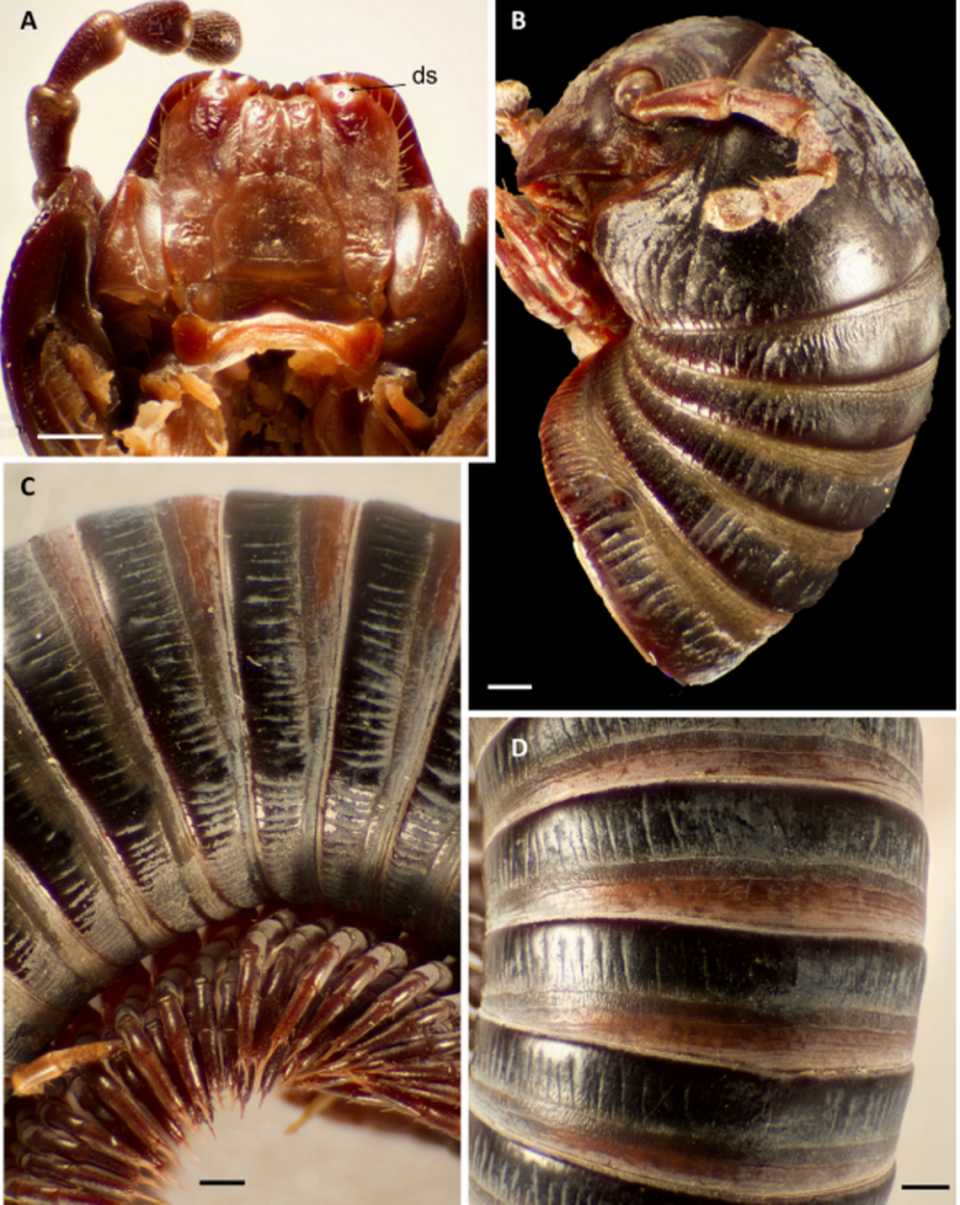‘Giant’ creature — with ringed body — discovered in Tanzania. See the new species
Scuttling under the pines at a plantation in the highlands of Tanzania, a long critter took a step. Then it took another and another.
The ringed creature may seem small, but it is part of a family of giants — and a new species.
Henrik Enghoff, a researcher with the Natural History Museum of Denmark, has been sifting through specimens of millipedes collected nearly 30 years ago, McClatchy News reported.
In December, he published the discovery of a new species that had “gone overlooked,” McClatchy News reported, and now he has identified another.
The millipede, about 4 inches long, is part of the genus Archispirostreptus, which includes “some of the largest millipede species,” according to a study published in the journal Zootaxa on April 15.
The “gigantic” species are widespread in East Africa, Enghoff wrote in the study, and some have even become “popular” pets.
But while those species are known for their size, the new species doesn’t quite measure up.

Discover more new species
Thousands of new species are found each year. Here are three of our most eye-catching stories from the past week.
→Volcanic ocean creature — with 'long' legs — discovered in Japan. It's a new species
→'Flat'-headed creature — with multicolored eyes — discovered as new species in China
→Nocturnal creature — a 'rapidly-running' predator — discovered as new species in India
The millipede has fewer rings on its body, according to the study, making it “relatively slender.”
Enghoff named the species Archispirostreptus microgigas, “from Greek mikró (small) and gigas (giant), i.e. a small giant, referring to the relatively small size,” according to the study.
The lesser giant millipede is a dark brown color, with reddish brown eyes and a “faint greenish tinge” on the rings of the body when it’s dry.
The species also stands out because of its “completely smooth” antetorsal process, a portion of the millipede’s external genitalia called the gonopods.
The lesser giant millipede was first discovered on a tree plantation in 1996, Enghoff wrote, in the Mufindi highlands of Tanzania.
The pine trees do not grow there naturally, but the millipedes have decided to call the undergrowth home, according to the study.
The Mufindi highlands are in the Iringa Region of the Southern Highlands in southern Tanzania.
The study was published as part of ongoing work to classify millipede species.
‘Giant’ creature with ‘finger’-like genitalia found in Tanzania. It’s a new species
‘Erratic’ mountain creature seen leaping across rocks — and discovered as new species
‘Mysterious case’ of stolen bait leads to first-in-a-century discovery in Australia
7-foot boa constrictor found mating on tree in Brazil — and discovered as new species


